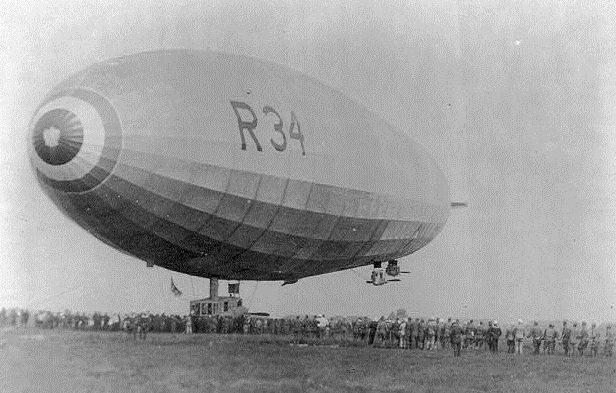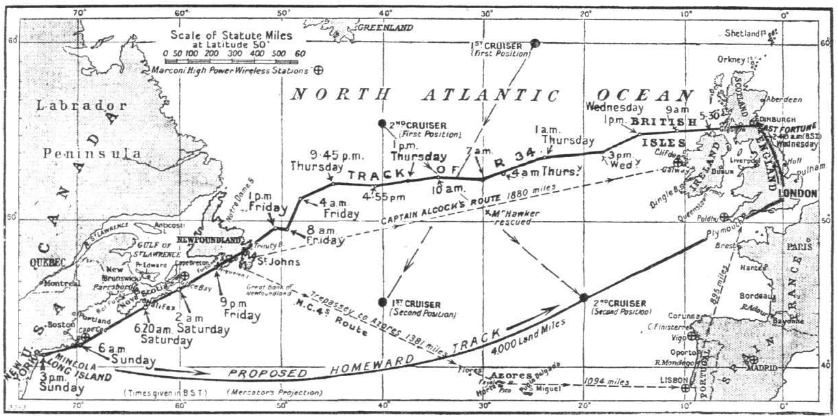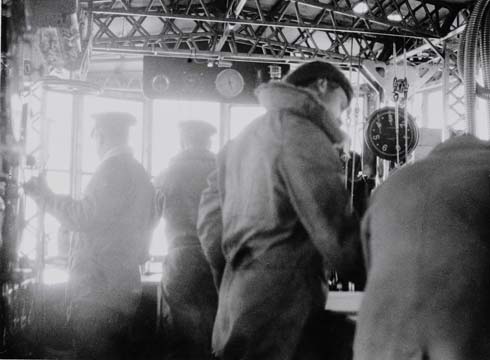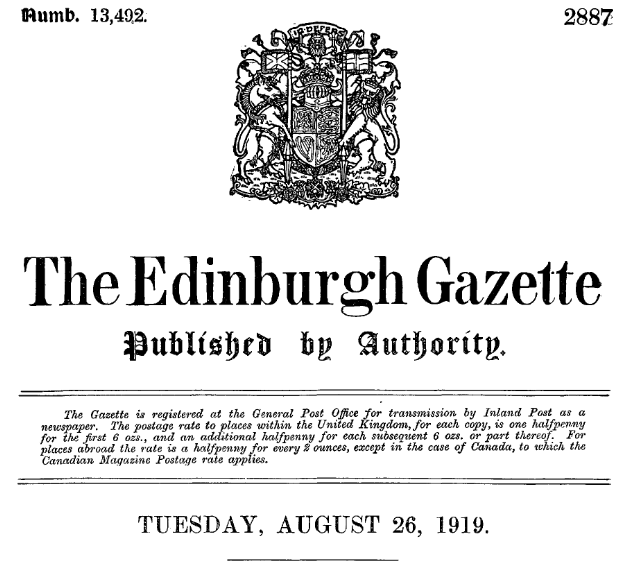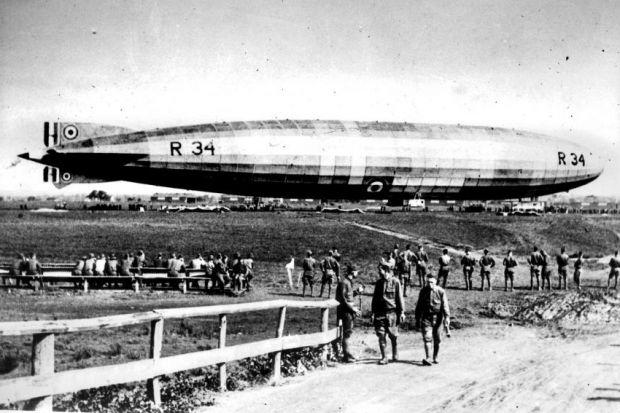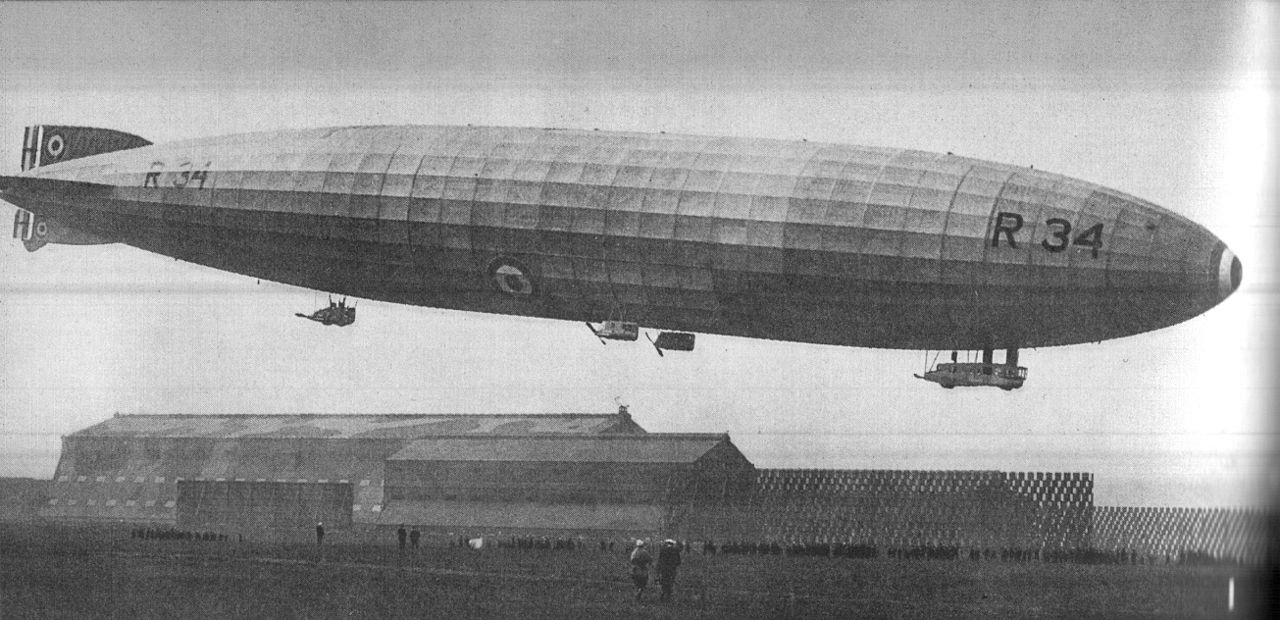
13 July 1919: The Royal Air Force rigid airship R 34 completed its two-way crossing of the Atlantic Ocean and at 6:57 a.m. landed at Pulham Airship Station, Norfolk, United Kingdom. The airship was under the command of Major George Herbert Scott, A.F.C., R.A.F. The total complement, including passengers, was 30 persons.
The return flight from Mineola, Long Island, New York took 73 hours, 3 minutes. According to records of the Fédération Aéronautique Internationale, the distance flown by R 34 on the return flight was 6,138 kilometers (3,814 miles).
This was the first “double crossing” by an aircraft. The round trip flight began at East Fortune Airship Station near Edinburgh, Scotland, on 2 July. The East-to-West crossing took 108 hours, 12 minutes.
Major Scott was appointed Commander of the Most Excellent Order of the British Empire.
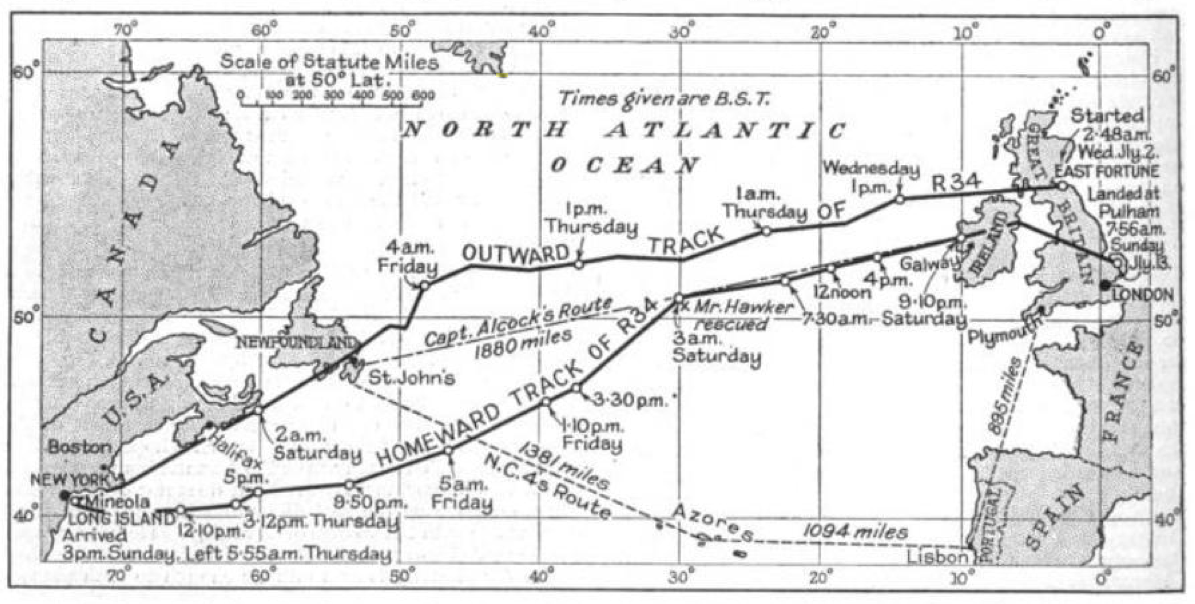
During the return flight on of the airship’s five engines suffered a broken connecting rod which damaged the cylinder block. It could not be repaired.
R 34 was based on extensive study of the captured German Zeppelin, L-33. It was built for the Royal Naval Air Service by William Beardmore and Company, Inchinnan, Renfrewshire, Scotland, but with the end of World War I, the RNAS and Royal Flying Corps were merged to become the Royal Air Force. 643 feet long (196 meters), with a maximum diameter of 78 feet, 9 inches (24 meters), the dirigible had a total volume of 1,950,000 cubic feet (55,218 cubic meters). The airship had a light weight metal structure covered with doped fabric. Buoyancy was provided by 55,185 cubic meters (1,948,840 cubic feet) of gaseous hydrogen contained in 19 gas bags inside the airship’s envelope. R 34 had a gross lift capacity of 59 tons. Useful lift was 58,240 pounds (26,417 kilograms).
The airship was powered by five water-cooled, normally-aspirated, 15.395-liter (989.483-cubic-inch-displacement) Sunbeam Maori Mk.IV dual overhead cam (DOHC) 60° V-12 engines with four valves per cylinder. The Mk.IV’s cylinder bore had been increased from 100 millimeters to 110 millimeters (3.94 to 4.33 inches), resulting in a larger displacement than previous Maori variants. The Maori Mk.IV was a direct-drive engine which produced 275 horsepower at 2,000 r.p.m. Each engine turned a two-bladed, 17 foot diameter (5.182 meter) propellers through a remote gearbox with a 0.257:1 reduction. The two wing engines were equipped with reversible gearboxes. With the engines turning 1,800 r.p.m., the R 34 had a cruising speed of 47 knots (54 miles per hour/87 kilometers per hour) and consumed 65 gallons (246 liters) of fuel per hour.
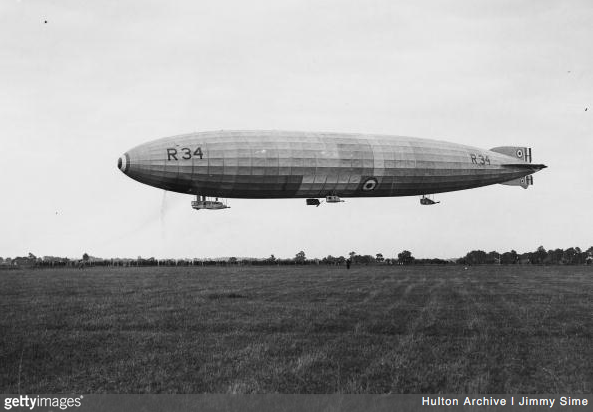
© 2017, Bryan R. Swopes
